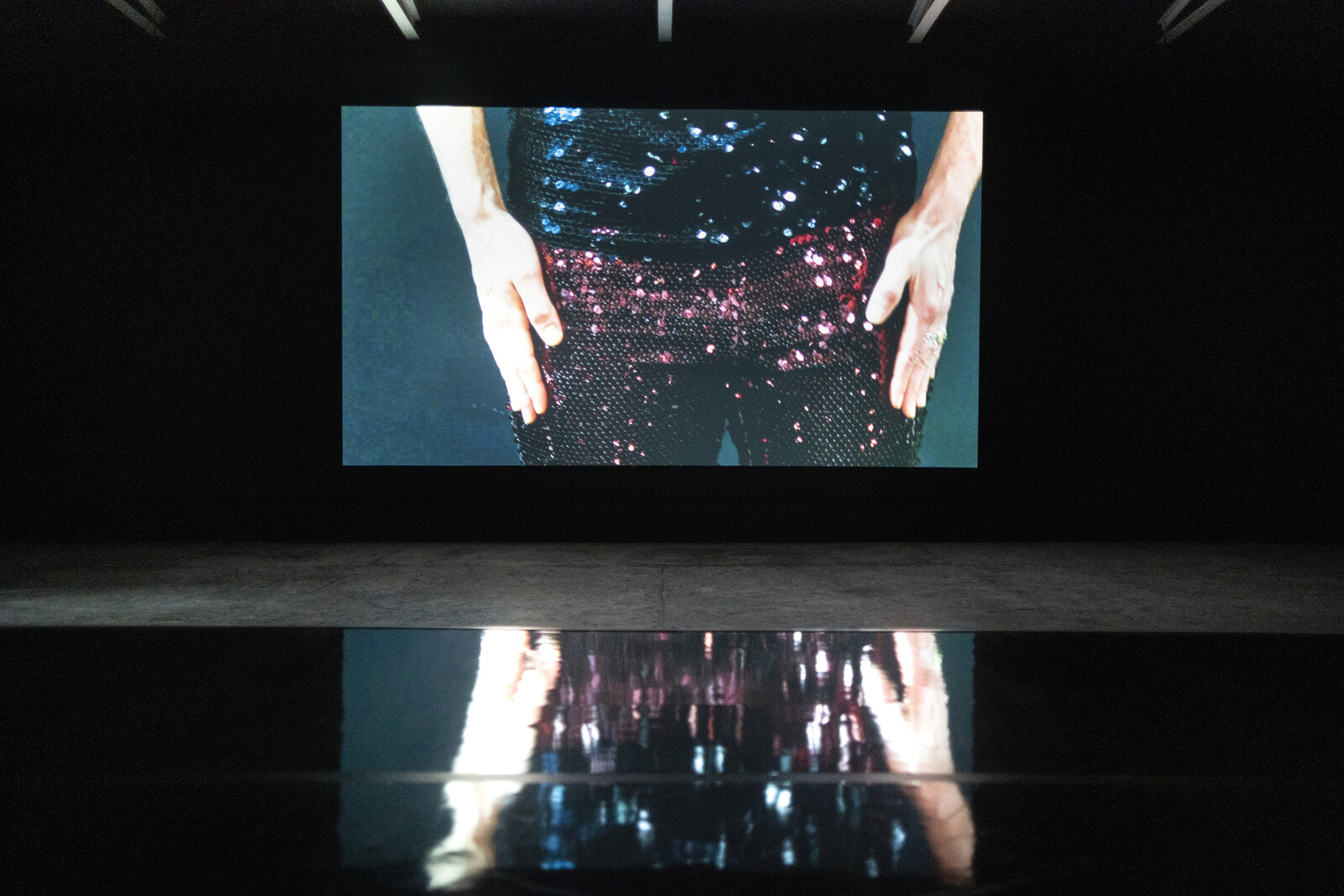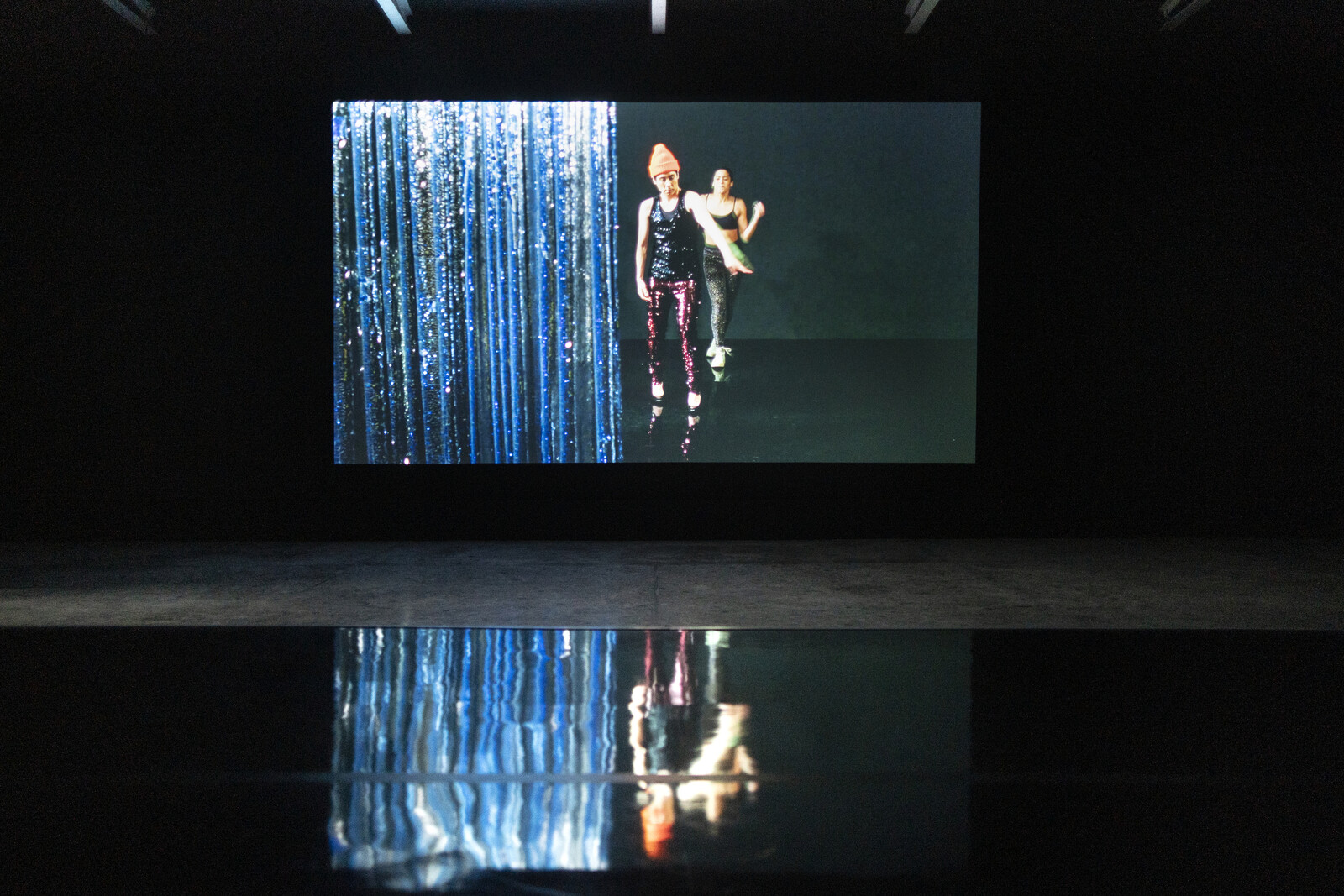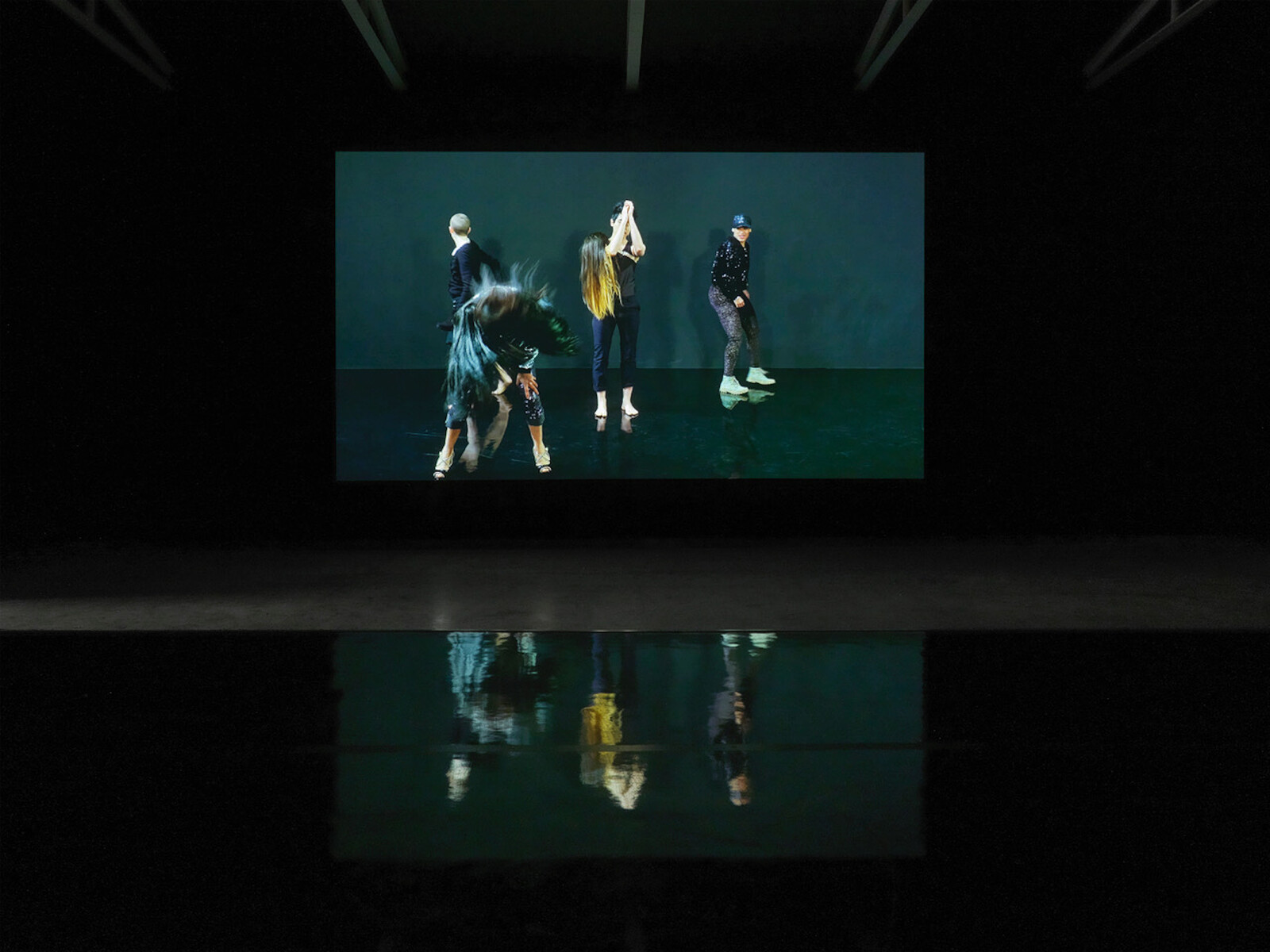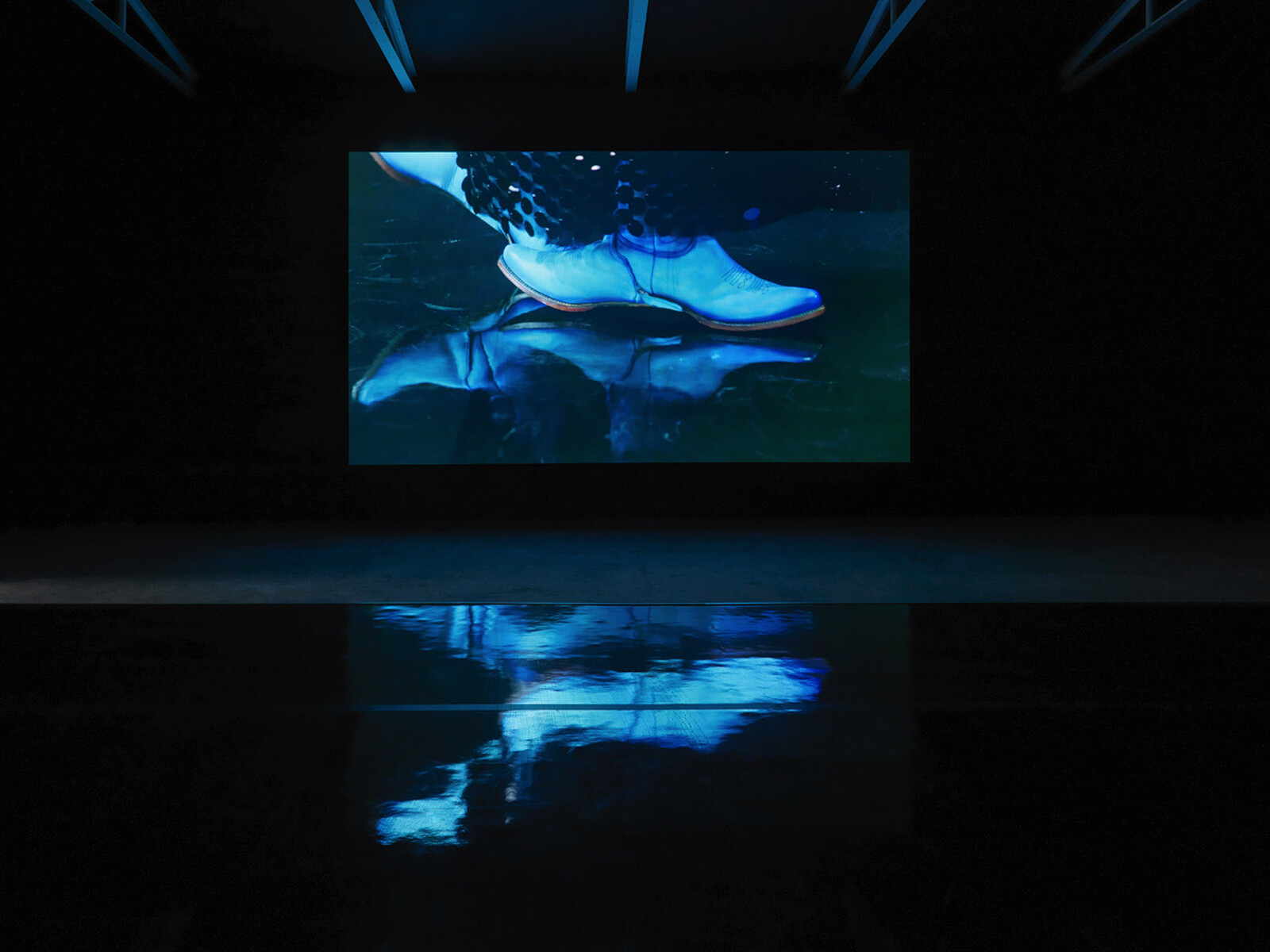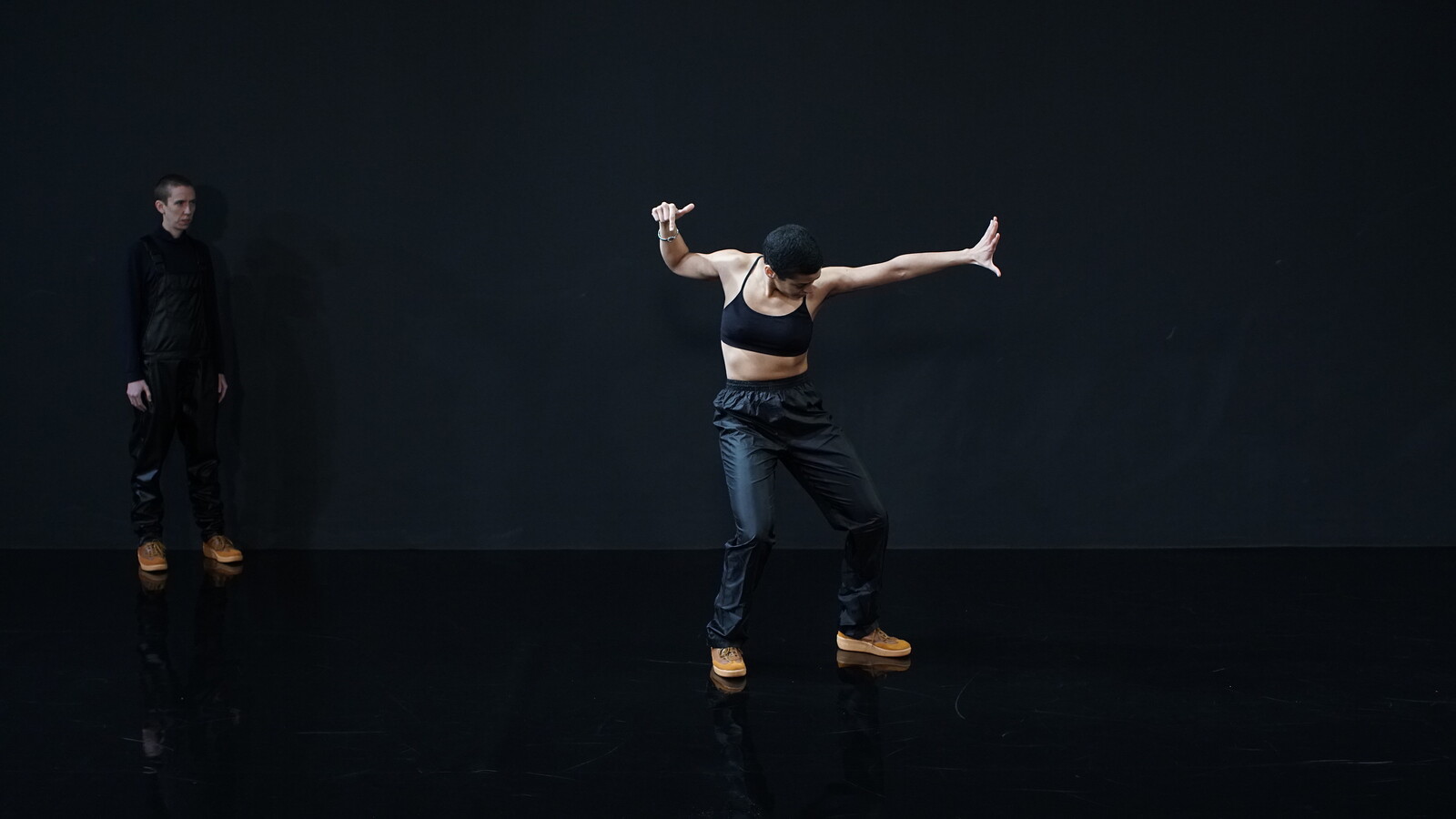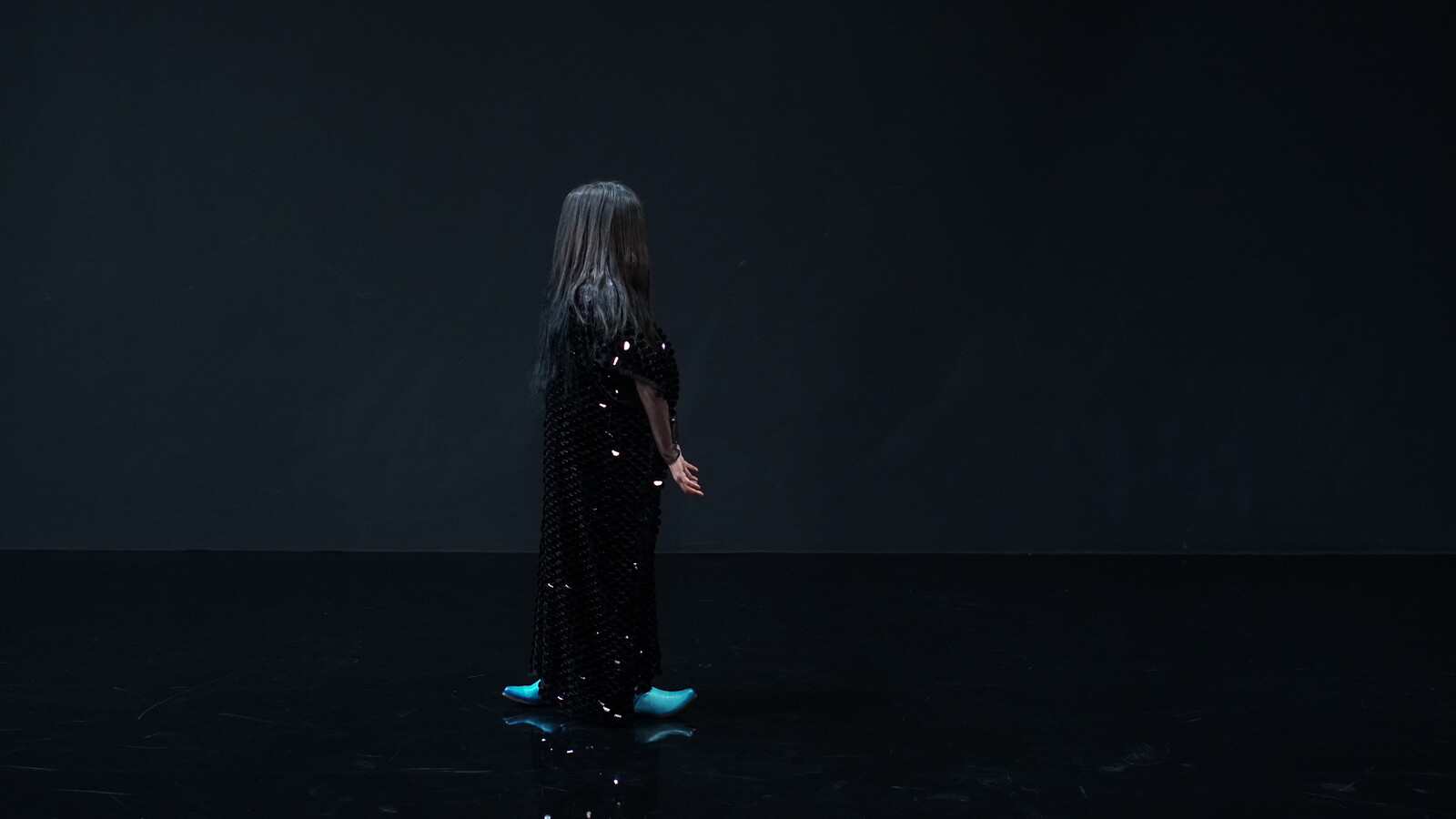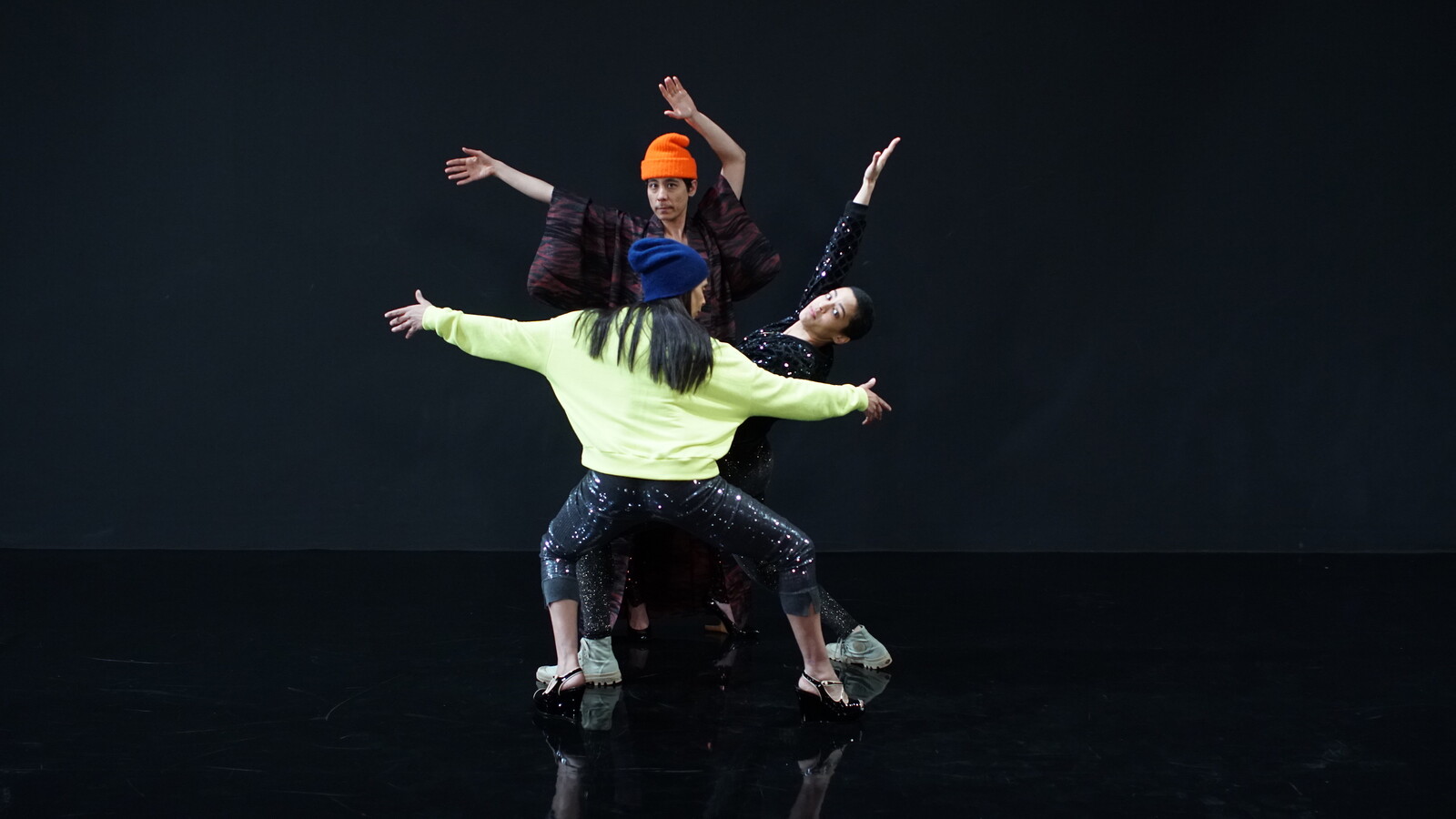As I sit to organize my thoughts on Pauline Boudry and Renata Lorenz’s installation Moving Backwards, currently on show in Los Angeles project space JOAN, breaking news alerts slide anxiously across my screen like ephemeral disaster poetry:
Russia closes China land border to prevent spread of coronavirus.
Press Send for Brexit: E.U. Seals UK Withdrawal by Email.
Republicans Block Impeachment Witnesses, Clearing Path for Trump Acquittal.
Netanyahu Plans to Extend Israeli Sovereignty Over Jordan Valley and Settlements.
Boudry and Lorenz’s response to this moment of what they call “reactionary backlashes” is to find power and possibility in backward movement, as a strategy of tactical response. Through a multimedia work featuring, as its centerpiece, a video of a series of dances that play with perceptions of locomotion, the artist duo ask what power could be assumed by disassociating the notion of forward movement from advancement and backward movement with defeat. Put another way, what violence is imposed by a conceptualization of time that is grounded in a colonial understanding of progress as an act of continuous conquest?
Moving Backwards establishes its collaborative theoretical grounding with a newsprint publication, available for visitors to take. The newspaper features video stills and letters from 15 contributors representing a geographically diverse sample of academics and activists working across political science, gender studies, women’s studies, indigenous studies, queer studies, and critical theory, each written in response to the artists’ open-ended invitation to explore what it might mean to move backwards. Rather than function as a how-to manual of resistance, several of these writings take diarist or poetic form, even as they draw on the academic rigor, historical precedents, and real-life experiences of figures like Judith Butler, Patrisse Cullors (co-founder of Black Lives Matter), and Fouza Al-Youssef (a leader of the Kurdish Women’s Movement). As a takeaway, the publication complements the experiential and durational limitations of the video form, allowing viewers another way to engage with the artists’ ideas at their own pace.
The dances in the video relate to the letters like a call-and-response song, relying on the reader/viewer to discover connection points. Dressed in pearls and conservative black office-wear with boots on their hands, eyes locked on the viewer/camera, dancer Julie Cunningham lifts one leg over their head in a standing side split. Their contortions in the practically—and politically—improbable outfit seem to dare the viewer to imagine what sort of body might more explicitly articulate control as practice than a genderqueer professional dancer. A line in Eve Tuck’s letter comes to mind: “Stay away from comparing apocalypses.” The phrase implies that comparative evaluation is not always generative. Sometimes, faced with systemic problems, the best tools are awareness and an acknowledgement of the limits of accepted knowledge.
In the video’s climactic finale, all the dancers are together, bobbing to a dance-club beat, with leather straps holding long-haired wigs to their shoulders added to their costumes. In this final scene, the wigs’ uncanny bouncing reveals that the motion depicted in the video is not to be taken at face value. Upon second viewing, subtle hints sprinkled throughout the video divulge a constant toggling back and forth between takes that are played straight and ones that are deliberately or even doubly distorted. Now, dancers who at first appeared to walk forward are understood to have been filmed walking backwards. In their own letter, Boudry and Lorenz cite a tactic used by women members of the Kurdish guerrillas of wearing their shoes backward, so as to leave strategically misdirecting tracks in the snow. Seen as an inspirational allegory for manipulating perception of movement, the video likewise disorients perceptions of motion and time, through a variety of editing manipulations.
Moving Backwards was commissioned for the Swiss Pavilion at the 2019 Venice Biennale. As representatives of their nation at contemporary art’s most emblematic cultural diplomatic spectacle, Lorenz and Boudry directly addressed their political ambivalence, if not quite conscientious objection, to their participation. Their artist statement begins: “Dear Visitor, we do not feel represented by our government and do not agree with decisions taken in our name.” Underscoring this point, a dance in the video is set to what sounds like a distorted national anthem. All pomp, no circumstance, the march has been edited to remove all words, leaving it a shell of blind nationalism without a specific country referent.
At JOAN, in a midrise building in the heart of Los Angeles’s historic fashion district, the show engages with a different social context. Moving Backwards finds power and hope in dance culture, queerness, and otherness—modes of resistance threatened by gentrification in many global cities. In Los Angeles, the struggle is perhaps mostly publicly and symbolically, if problematically, fought about three miles away in Boyle Heights, an area that has identified the art industry as agent of community displacement. Read against this backdrop, the work feels a bit coolly removed from the specifics of the kinds of real-world events that inspired it.
In addressing the fear and frustration that is a consequence of international waves of populism and repressive political agendas, Moving Backwards carves out a place for the role of artistic response as opposed to activist action—banking that the former can offer an important good, even when the latter is deeply needed. Boudry and Lorenz state: “We have no recipe. But after taking a deep breath we are up for turning disadvantage into a tool: Let’s collectively move backwards.” It’s a reminder that although art and activism often respond to similar exigencies, they are ultimately different strategies, working to different ends. The consolation lies in hope that, as allegory, the idea of moving backwards can allow the extra perspective needed to inform effective activism and offer a source of power.
